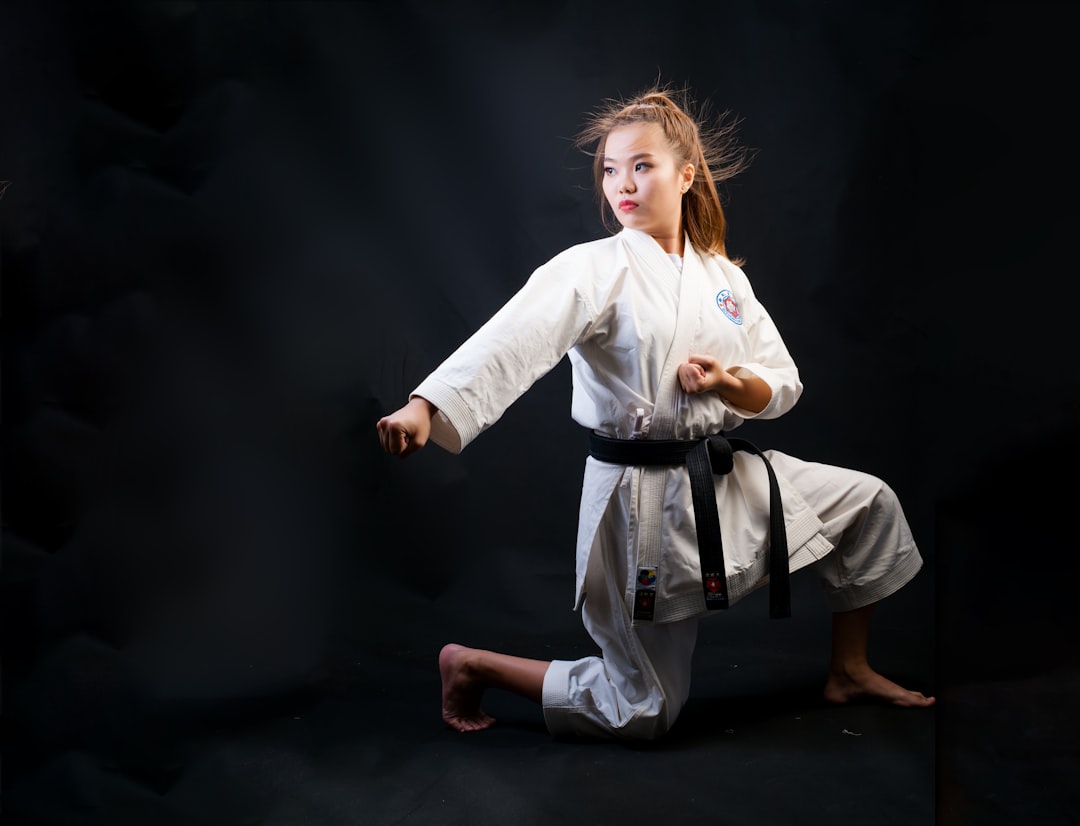The article discusses the karate uniform, commonly known as 'gi,' which is a fundamental aspect of martial arts practice. The gi consists of a jacket called the 'uchiwa' and straight-legged trousers named 'rei-gi,' typically made from heavy cotton or hemp for optimal movement during training. The color of a practitioner's gi can signify their rank in karate, with white generally representing lower belts and black indicating higher ranks. While the term 'gi' is universally recognized, it may be known by different names among newcomers. The gi serves both as functional attire for martial arts training and as a symbol of respect and tradition within the karate community. Its design and material can vary across karate styles and personal preferences, but its role as a unifying element remains consistent. The ki's dual function includes holding the uniform in place and indicating the wearer's progression through the colors of their obi (belt), which changes as they advance in rank. Traditional gis are chosen for their durability, breathability, and comfort, aiding in performance and perspiration management during intense training sessions. Keywords include karate uniform name, martial arts attire, and the significance of the gi in karate practice.
Karate practitioners around the globe don a traditional garb that symbolizes discipline, respect, and readiness. Often referred to colloquially as a “gi,” this article delves into the specific term for the karate uniform, its components, and their significance. Join us as we uncover the origins and details behind this pivotal piece of martial arts attire in “Unraveling the Essentials: Understanding the Karate Uniform Terminology” and “The Anatomy of a Karate Uniform: Breaking Down Its Components and Significance.” Whether you’re an experienced martial artist or a curious newcomer, understanding the karate uniform name is key to appreciating the rich tradition it represents.
- Unraveling the Essentials: Understanding the Karate Uniform Terminology
- The Anatomy of a Karate Uniform: Breaking Down Its Components and Significance
Unraveling the Essentials: Understanding the Karate Uniform Terminology

When delving into the practice of karate, one of the first elements that come to light is the attire worn by practitioners—the karate uniform. Often, individuals new to the martial art may refer to it by various names or be uncertain of its precise terminology. The uniform, an integral part of the discipline, serves not only as a garment but also as a symbol of respect and tradition within the sport. Is the correct term for the karate uniform simply ‘gi’ or does it have another name specific to karate practice? The gi in karate, much like in other martial arts such as judo and aikido, is a two-piece garment consisting of a jacket and trousers, typically made of heavy cotton or hemp material. It is designed for ease of movement, allowing practitioners to execute techniques with both flexibility and comfort. The top, known as the ‘uchiwa,’ extends beyond the hands when armed, and the trousers, referred to as ‘rei-gi,’ are straight-legged, falling just above the ankles.
In karate, the gi’s color often signifies the wearer’s rank or level within the discipline. White is typically reserved for lower belts, while higher-ranked practitioners may don a black gi, symbolizing their mastery and dedication to the art. The specific design and fabric of the gi can vary by style and by individual preference, but its essential purpose remains the same: to provide a standardized uniform that unites all karateka under a common identity. Whether you are a beginner or an experienced practitioner, the karate uniform serves as both your canvas for expression through the art and a reminder of the shared tradition you are part of.
The Anatomy of a Karate Uniform: Breaking Down Its Components and Significance

A karate uniform, commonly known as a gi, is a garment steeped in tradition and functionality, designed to facilitate the movements inherent to martial arts practice. The gi consists of a jacket, trousers, and a belt, each with its own significance. Known as the “karate uniform name,” the top portion, or jacket, typically features a closed collar and is buttoned or tied up the front, allowing for a full range of motion while providing a clean silhouette that signifies readiness and respect within the dojo. The trousers, on the other hand, are straight-legged and designed to be belted at the waist, ensuring they stay in place during dynamic movements. The choice of fabric and cut is intentional, as it allows for ease of movement without being overly restrictive. The belt, or obi, serves a dual purpose: it secures the gi and also indicates the wearer’s rank within the martial arts community. As a karate practitioner progresses, they earn different colors of belts, each denoting their skill level and dedication to the art. What is the typical material used for a karate uniform? The traditional gi is made from heavy cotton or hemp, which offers durability and breathability during practice. Why are these materials preferred for a karate uniform? These materials allow for optimal performance while practicing, as they are robust enough to withstand repeated movements yet comfortable enough to manage perspiration during intensive training sessions.
In wrapping up our exploration, it’s clear that the karate uniform holds more than just a physical form; it embodies tradition, discipline, and respect within the martial arts community. The term for this garb is specifically known as a “keikogi” or “gi,” a foundational component of the practitioner’s attire that facilitates movement and emphasizes the unification of all karateka. Understanding the karate uniform name and its anatomy offers insight into the rich history and cultural significance of this practice, which is invaluable for both newcomers and seasoned martial artists alike.
